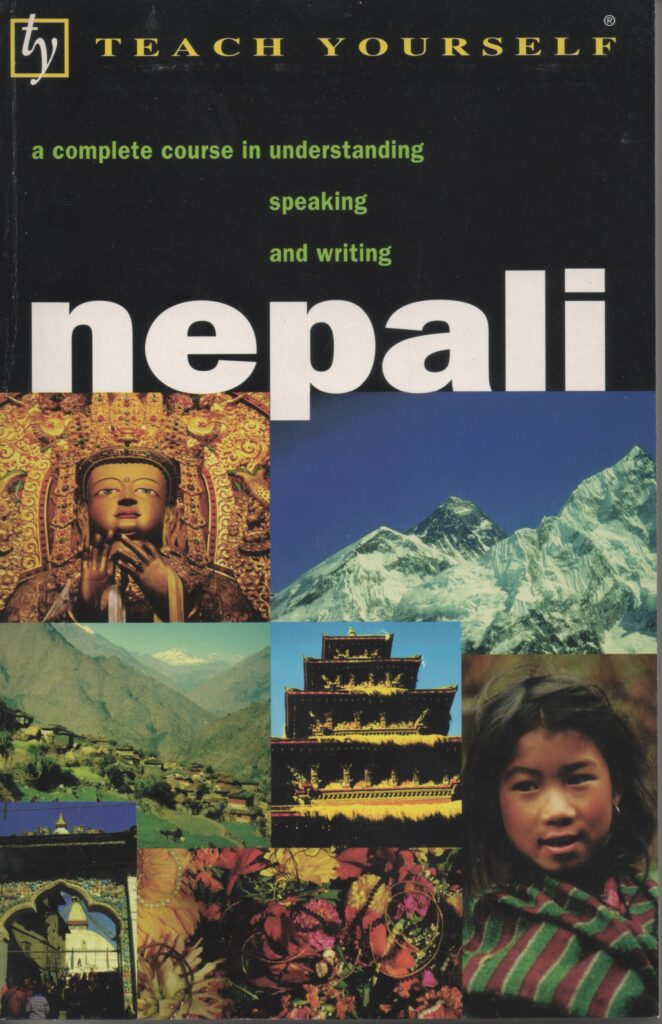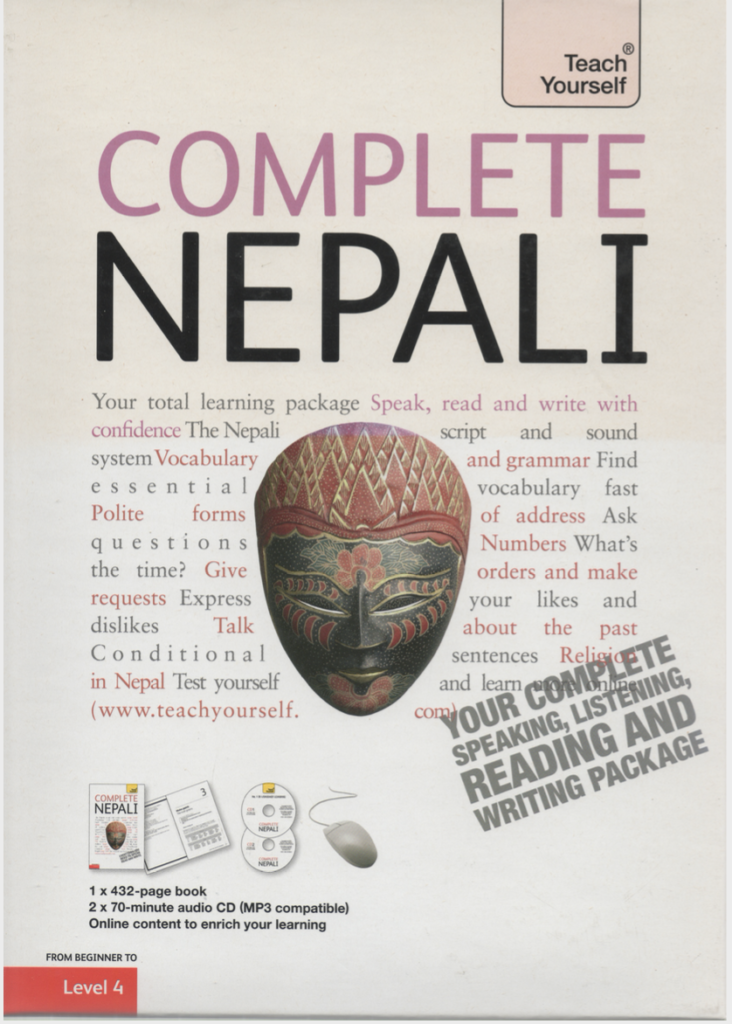Learning Resources
In 2004 I described a typical Nepali language class at SOAS for the readers of The Nepali Times: Nepali 1 at SOAS
These are the textbooks I wrote for foreign learners of Nepali language and literature, in collaboration with my friends Abhi Subedi and Krishna Pradhan:


Teach Yourself Nepali (later, Complete Nepali). London: Hodder and Stoughton Educational, 2000 and multiple subsequent editions. Available from: bookshop.org

Modern Literary Nepali: An Introductory Reader. New Delhi: Oxford University Press, 1996.
उहिले बाजेको पालामा
The book उहिले बाजेको पालामा [Back Then in Grandfather’s Time] was published by Panos Institute South Asia in 2000. Each of its 52 chapters consists of a short text based on an interview conducted with a senior Nepali citizen, in which the individual narrates an incident from his or her life, or reflects on changes in society, and so on. The language of these texts is both simple and highly colloquial, and the subject matter is very interesting. I compiled vocabulary lists for six of these chapters and read them in class with advanced students of Nepali at SOAS. The texts of these six chapters, accompanied by the vocabulary lists, are provided here, in the hope that both foreign students of Nepali and Nepali readers will enjoy and learn from them. Panos kindly permits the republication of these materials for educational and non-profit purposes.

Chatra Bahadur Rai
Ashtaman Maharjan
Sadhana Adhikari
Suryanath Acharya
Haribindu Shrestha
Janakprasad Banskota
Language for Lockdown
When the pandemic struck in March 2020, my home department at SOAS launched an initiative called ‘SOAS Language for Lockdown’. The following ‘Nepali Covid-19 dialogue’ videos were my and Krishna Pradhan’s contribution:
SOAS Language for Lockdown. Vocabulary for Nepali Covid-19 dialogue.
‘Culture and Conflict in Nepal’
I taught this 10-week module (‘CCN’) to Masters students at SOAS in 2018 and 2019. It introduces recent and contemporary debates on political change and conflict in Nepal, with particular reference to the aftermaths of the 1996-2006 ‘People’s War’ and the earthquakes of 2015. Although it focuses on the specific context of Nepal, the module also offers insights into broader issues, including the relationship between ethnic, linguistic and national identities; processes of nation building; the relationship between dominant elites and marginalised minorities; tensions between tradition and modernity; and the underlying causes of social and political conflict in a resource-poor environment. You will find the syllabus and reading list here: CCN syllabus

Pipalko Bot podcasts by Anushuya Thapa